Position with automatic weapons in the pre-war USSR
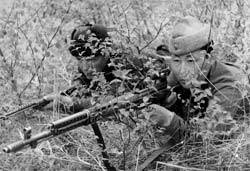 It is generally accepted that in the Soviet Union the situation with automatic weaponsespecially with submachine guns was unimportant.
It is generally accepted that in the Soviet Union the situation with automatic weaponsespecially with submachine guns was unimportant.Especially against the background of the Wehrmacht and the shortcomings of the Soviet-Finnish war. But we have already found out that the Soviet units possessed not a smaller number of submachine guns, and often more.
Often like to recall the fact that February 21 1939, were removed from production - Dektyarev submachine guns (RPM). But they were removed due to certain design flaws that had to be eliminated and to simplify the design.
The basis of this decision was very respectful for the USSR: the planned purchase price of PPD-34, in 1936, was 1350 rubles. For comparison: the price of a Mosin rifle 90 rubles; Nagan revolver - 50 rubles; Degtyarev light machine gun (DP-27) - 787 rubles. A weighty argument to simplify the design.
However, the refusal of submachine guns was not provided, on the contrary, they began the development of a new software. Submachine guns were regarded as a promising weapon. The designers were told to correct the deficiencies in the PPD as soon as possible.
Already 20 August 1940, the factory tests were presented submachine gun design G. S. Shpagin - the famous PCA. At the same time tested the submachine gun B. G. Shpitalnogo.
The result - December 21 1940 of the year, adopted - PCA-41. The same Dektyarev machine gun, after modifications, was put into production. In 1940, PPDs were made - 81118 pieces. Its production comes to naught, only with the adoption of the armament - PCA-41.
Submachine gun Degtyarev PPD-34
Submachine gun with a free gate B.G. Spit
Prewar years
In the Soviet Union, really great efforts were made to arm infantry with self-loading and automatic weapons.
Back in the 20s, intensive work was going on to create an automatic (self-loading) rifle for the 7,62 mm cartridge of the 1908 sample of the year, which was the main ammunition of infantry.
Already in the 1926 year passed competitive tests, the best were rifles Degtyarev, Tokarev and Fedorov. But work to improve the reliability and simplicity continued. The following tests were performed in 1928, 1930. After their passage, they decided to launch an experimental batch of Dektyarev rifles. But in the 1931, a S.G. Simonov rifle appeared, which showed the best results in tests, in the 1935-1936. According to their results, they adopted the Simonov rifle - ABC-36.
The price of the planned purchase of ABC-36 in 1937 was 1393 rubles. If from 1934 to 1939, the PPD was purchased a little more than 4000, then ABC, after its adoption, 1937, 10280, 1938, 24401.
Work continued and after the adoption of the ABC, 22 May 1938, announced another competition for the development of an automatic rifle. The tests were carried out in late August and early September 1938 of the year, according to their results the rifle F. won. Tokarev, after modifications and further tests - February 26 1939 was adopted by the Red Army. Designated as “SVT-38”, a self-loading rifle of the Tokarev system, 7,62 mm.
This automatic rifle cost 880 rubles (in the mass series), that is, it was more economical than the RPM and Simonov rifles. According to the plan, SVT were supposed to be released: in 1939 year - 50 thousand, 1940 year - 600 thousand, 1941 year - 1,8 million, 1942 year - 2 million. Production of rifles of the 1891-1930 model. folded. According to the results of the Soviet-Finnish war, it was refined and named “SVT-40”.
The Tokarev automatic rifle was supposed to come into service with units that came into direct fire with the enemy, which is called "head-on". Old rifle sample 1891-1930. remained on the arsenal of signalers, gunners, drivers, anti-aircraft gunners, etc. (cooks).
Automatic rifle system Simonov arr. 1936.
Self-loading rifle Tokarev arr. Xnumx

SVT-40 sniper rifle with a PU optical sight
1941 State of the Year
Thus, we see that the country's leadership was not asleep and by the year of 1941 the rearmament of the troops with automatic weapons was gaining momentum.
The division of the rifle division of the state No.4 / 400 consisted of 11 people. Armament: the commander has a self-loading rifle SVT, 1-n machine gun, the machine gunner still has a pistol, or a revolver, the assistant machine gunner - SVT, 2-va PPD-40, 3 SVT and 3 ordinary Mosin rifles. That is, automatic weapons prevailed in the squad.
The rifle company had: 2 heavy machine gun, 27 PPD, 104 SVT, 2 sniper rifles, 9 carbines, 11 rifles, 22 pistols, or revolvers. In total, the state should have been in the division - 1204 submachine guns.
В tank of the division, according to the pre-war state, there were: 3551 Mosin rifles, 1270 carbines of the 1938 model, 45 sniper rifles, 972 SVT, 531 PPD, 2934 pistols and revolvers.
That is, in the infantry and tank units of the USSR, as well as the Wehrmacht were not:
- individual units of machine gunners (platoons, companies, battalions, even departments);
- self-loading (automatic) rifles, as in the Wehrmacht) prevail over submachine guns, since at that time they were the best weapons for infantry units.
The submachine gun quite correctly occupied the niche of auxiliary weapons of infantry units.
Degtyarev light machine gun
PPD arr. 193438 early (top) and late (bottom) release; clearly visible drum shop in the second sample
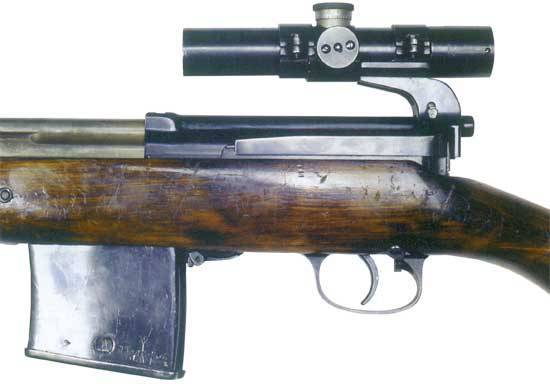
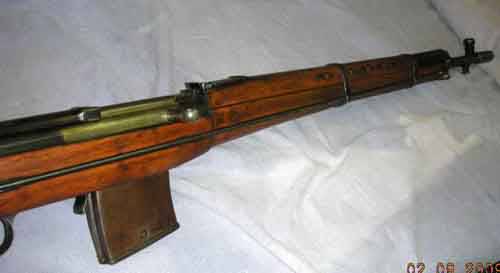
- http://topwar.ru"rel =" nofollow ">http://topwar.ru

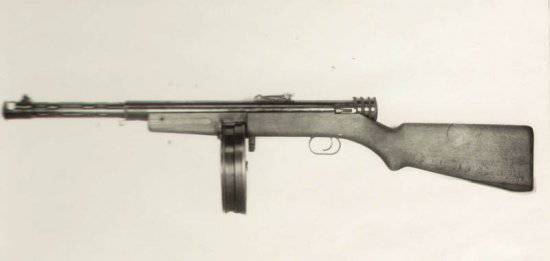
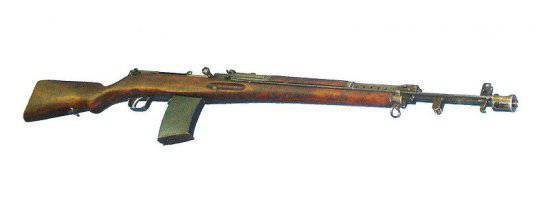

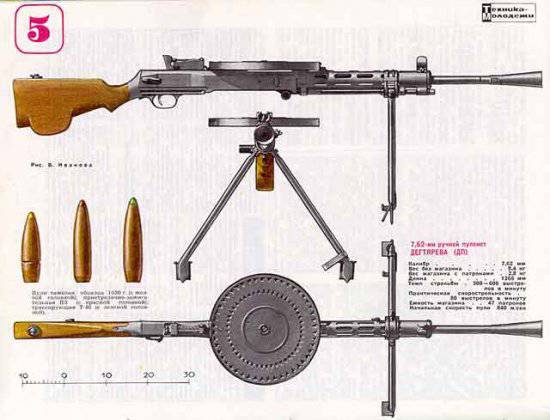
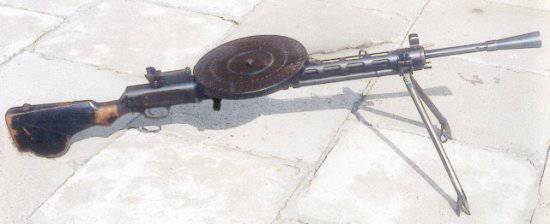
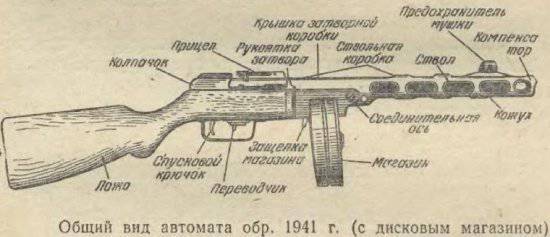
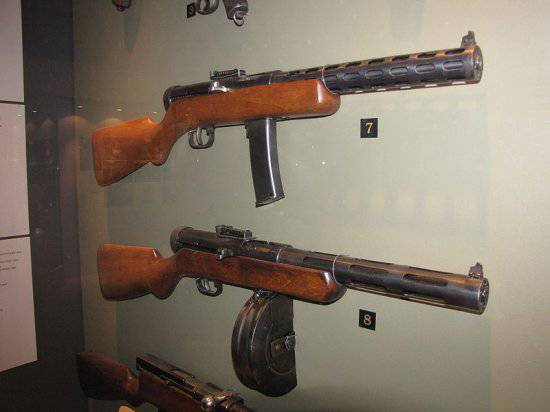
Information